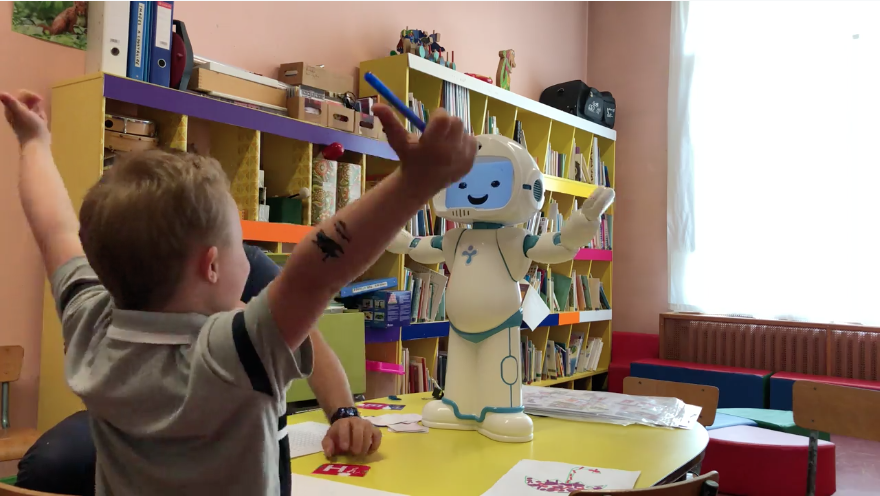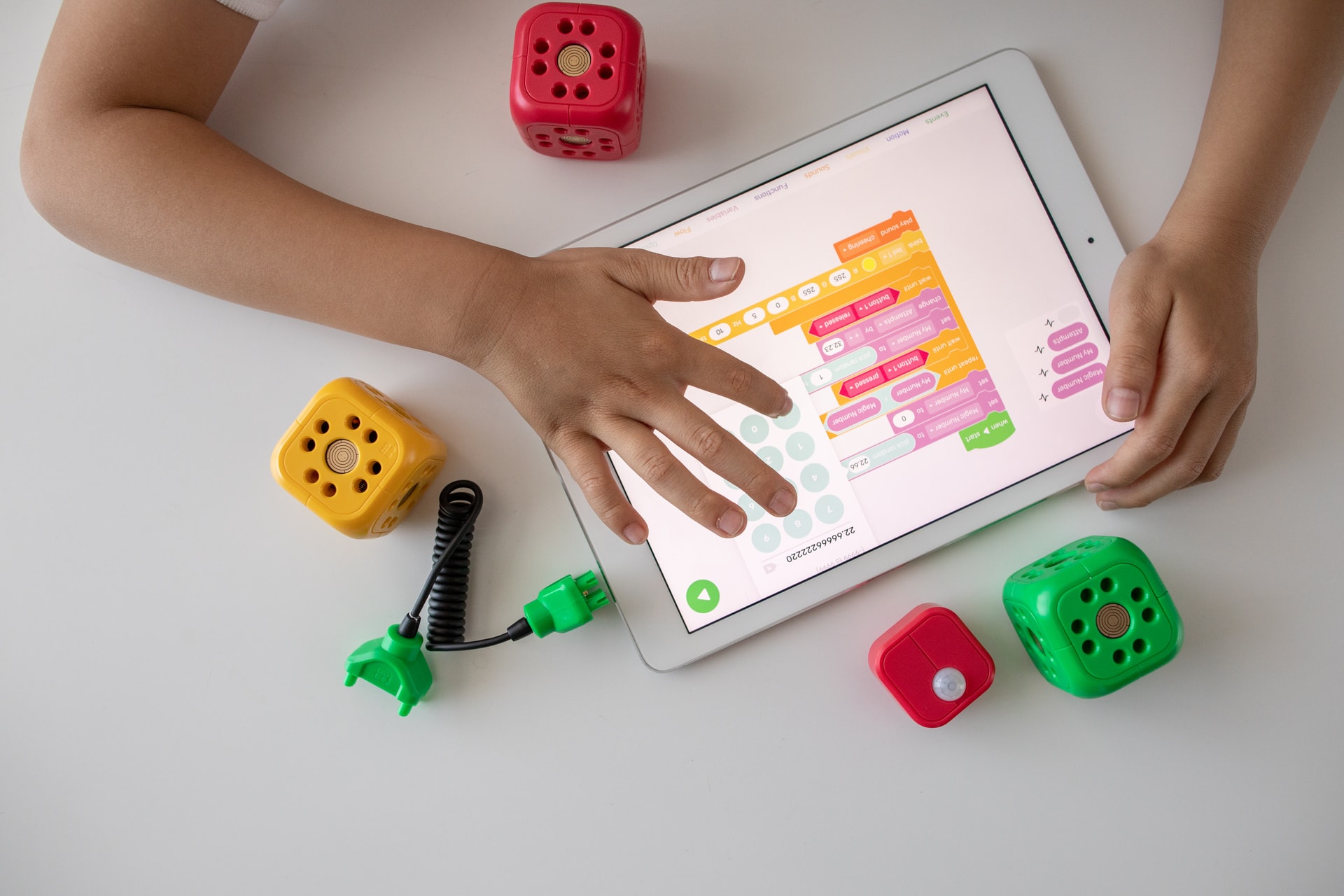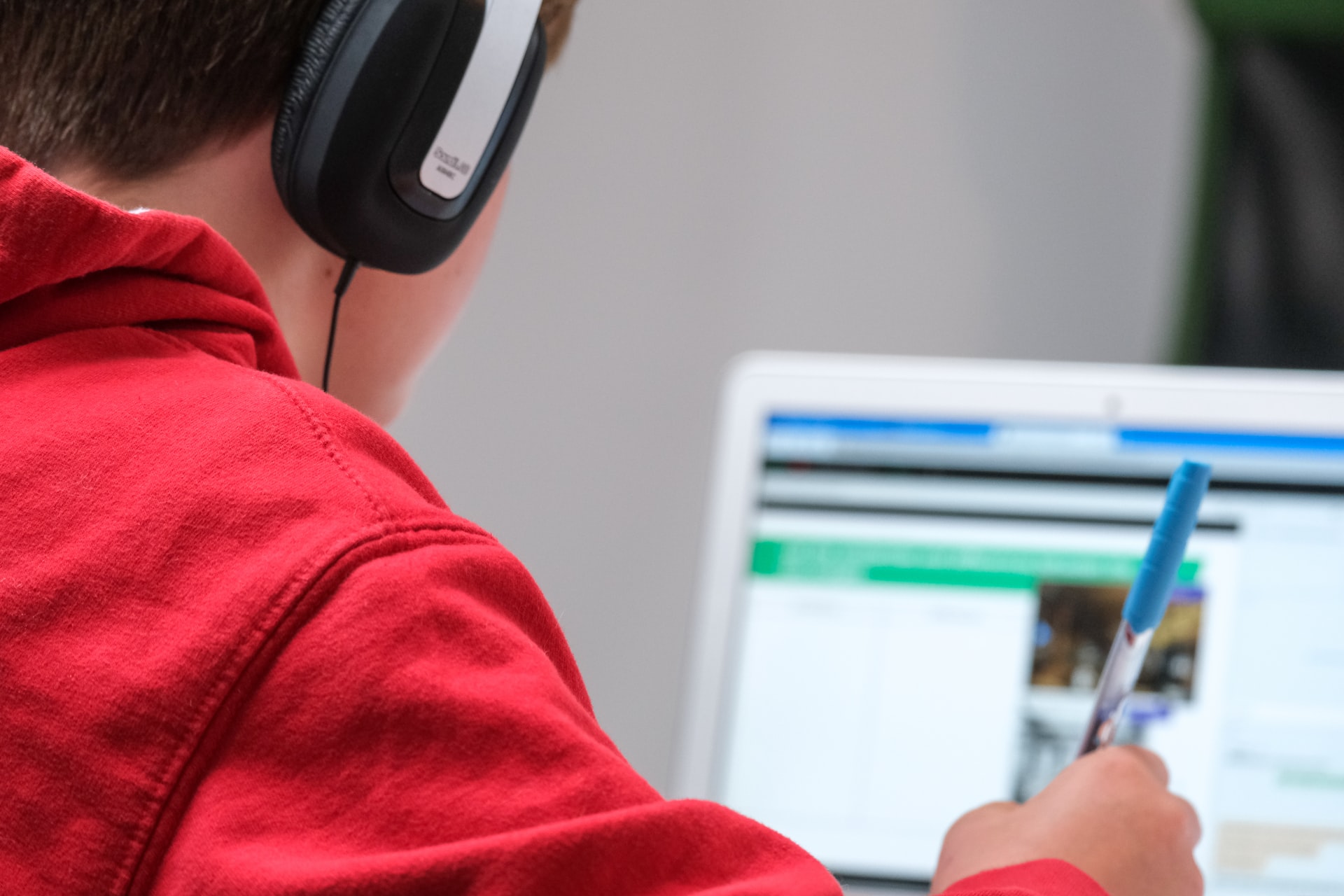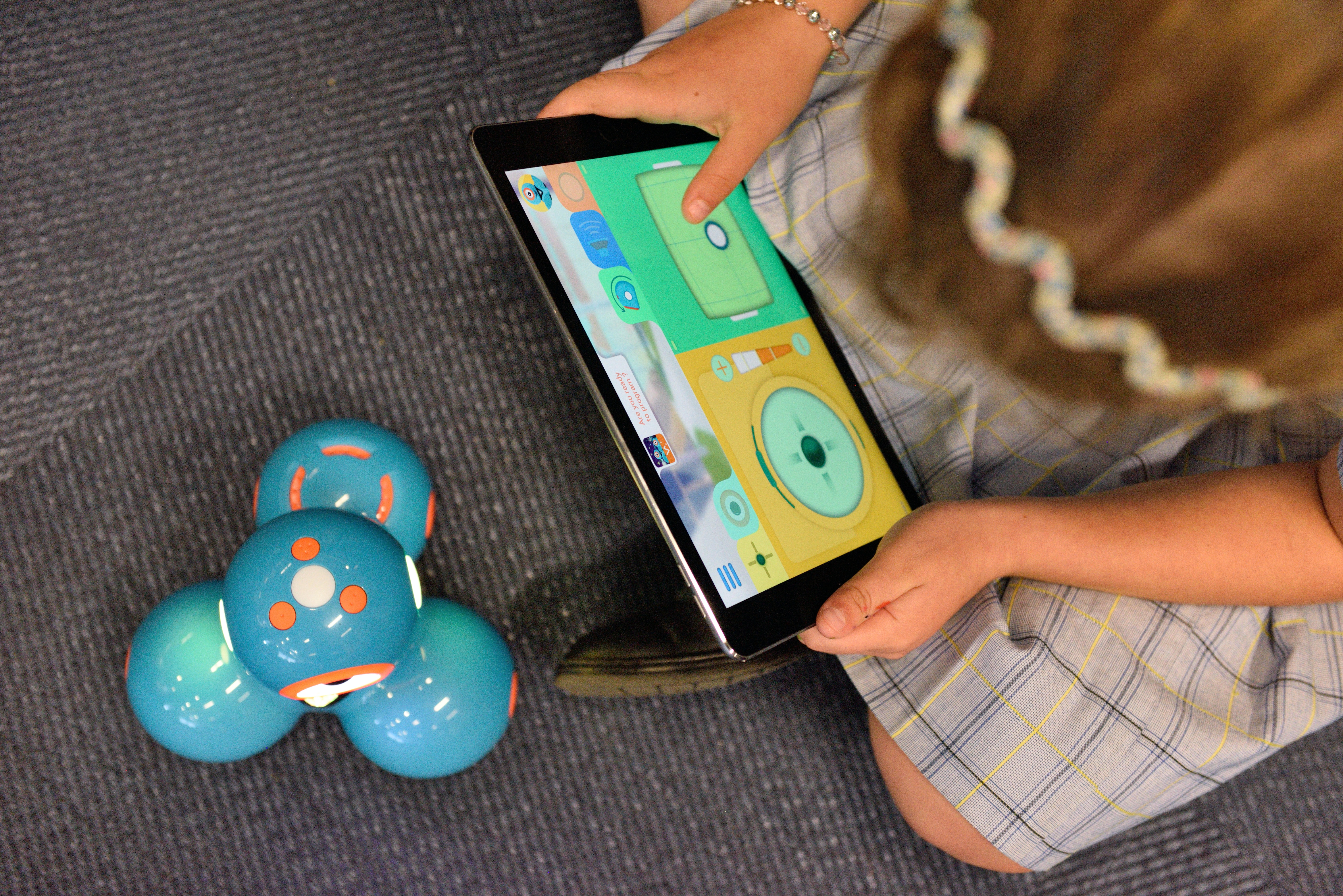RobotLAB Blog
Everything You Need To Know About Robotics in Businesses
Using Robotics to Support Sustainability
By Devin Partida

STEM educators have numerous tools at their disposal to keep students engaged with technology. It’s necessary in a tech-driven world, where students crave modern interactivity to maintain their attention and process concepts. Robotics is steadily becoming commonplace in classrooms as incorporation simplifies complex ideas and promotes sustainability to youth.
What can robotics offer STEM educators wanting to convey sustainable lessons to their students, and how can robots make a greener planet?
- 0 Comments
- Feb 10, 2023 2:31:02 PM
- Posted by Maria Alejandra Calcetero
- Topics: EdTech, STEM, Education, Computer Science, 21st Century Classroom, School, Student Engagement, Middle School, High School, autism, AI
How Robots Can Be Used in Autism Therapy
By Shannon Flynn

People are increasingly interested in how robots can help humans. From manufacturing facilities and complicated surgical procedures to preventing loneliness among older people and other isolated individuals, the possibilities are endless. Another area of significant interest relates to how robots could supplement therapy for people with autism. This approach is a developing option, but it’s already proving its worth.
- 0 Comments
- Feb 6, 2023 11:37:20 AM
- Posted by Maria Alejandra Calcetero
- Topics: EdTech, STEM, Education, Computer Science, 21st Century Classroom, School, Student Engagement, Middle School, High School, autism, AI
How to Use the 5Es in Remote Math Instruction
 Photo by Antoine Dautry on Unsplash
Photo by Antoine Dautry on Unsplash
A five-stage instructional model—engage, explore, explain, elaborate, and evaluate—can guide students to a deeper understanding of math.
- 0 Comments
- Mar 16, 2021 10:49:08 AM
- Posted by Natalia Galvis
- Topics: Robotics, About the Robots, EdTech, STEM, Curriculum, Special Education, teachers, autism, Coding, students, programming, Technology, VR, Realidad Virtual, Edchat, Digital Technology, teaching, online, Virtual Reality, lessons, eLearning, Automation
Hybrid Teaching Strategies for Elementary Classrooms
By Paula Díaz
 Photo by Kelly Sikkema on Unsplash
Photo by Kelly Sikkema on Unsplash
Some adaptations for hybrid classrooms, like digital manipulatives and instructional videos—will be worth keeping when all students are back in the room.
- 0 Comments
- Mar 11, 2021 10:00:00 AM
- Posted by Natalia Galvis
- Topics: Robotics, About the Robots, EdTech, STEM, Curriculum, Special Education, teachers, autism, Coding, students, programming, Technology, VR, Realidad Virtual, Edchat, Digital Technology, teaching, online, Virtual Reality, lessons, eLearning, Automation
5 Tips for Inclusive STEM Learning Experiences
 Photo by Robo Wunderkind on Unsplash
Photo by Robo Wunderkind on Unsplash
When students who would never sign up for a robotics or coding class do so because we’ve introduced it to them, it’s a win-win for everyone.
- 0 Comments
- Mar 10, 2021 10:00:00 AM
- Posted by Natalia Galvis
- Topics: Robotics, About the Robots, EdTech, STEM, Curriculum, Special Education, teachers, autism, Coding, students, programming, Technology, VR, Realidad Virtual, Edchat, Digital Technology, teaching, online, Virtual Reality, lessons, eLearning, Automation
Flipped Learning in Remote Education: Turn Your Virtual Classes Upside Down
 Photo by Compare Fibre (https://www.amvia.co.uk/ ) on Unsplash
Photo by Compare Fibre (https://www.amvia.co.uk/ ) on Unsplash
Have you always been interested in flipped learning but you’ve never actually put it into practice? Remote education offers the perfect chance to discover all the benefits of this methodological approach.
For those of you who aren’t familiar with flipped classrooms, the concept can be explained very simply. Flipping a classroom means turning learning structures upside down: instead of introducing a new topic with traditional lectures, teachers prepare a presentation and hand it over to their students. They will watch it or read it – depending on the format – on their own before the class. Subsequently, class time will be used for hands-on education.
- 0 Comments
- Mar 9, 2021 10:00:00 AM
- Posted by Natalia Galvis
- Topics: Robotics, About the Robots, EdTech, STEM, Curriculum, Special Education, teachers, autism, Coding, students, programming, Technology, VR, Realidad Virtual, Edchat, Digital Technology, teaching, online, Virtual Reality, lessons, eLearning, Automation
5 Ways How VR Will Soon Impact Education Process
By Theresa Cofield

Today, the educational process is almost completely different from the educational process 1 decade ago. Teachers were trying to make the process more fun for children and teens, but so they can learn. Nowadays, with all new technology, it’s definitely more fun and even efficient.
Special equipment for educational purposes is designed to make the knowledge transfer process a lot easier, quicker, and more effective. Throughout the years, the educational process has been evolving, new tech has been added, and the next logical step would be to implement VR technology into the process.
What would be the results and effects on the overall process? Would it make the learning process easier and more efficient? It seems that yes, VR pack kits implementation would cause positive effects on the process. Here are the 5 ways of how VR might soon impact the educational process.
- 0 Comments
- Mar 8, 2021 10:00:00 AM
- Posted by Natalia Galvis
- Topics: Robotics, About the Robots, EdTech, STEM, Curriculum, Special Education, teachers, autism, Coding, students, programming, Technology, VR, Realidad Virtual, Edchat, Digital Technology, teaching, online, Virtual Reality, lessons, eLearning, Automation
Adaptive Behavior Skills for Kids with Special Needs
 Photo by Nathan Anderson on Unsplash
Photo by Nathan Anderson on Unsplash
Adaptive behavior is defined as the set of skills that individuals should be able to perform at a certain age. Examples include social skills, cleaning, and personal grooming. Professionals call this life skills social competence, or adaptive behavioral functioning.
Children with special needs might be delayed in these areas. Part of the assessment for children with special needs is their ability to perform behaviors like those listed above.
As children mature, they can display more complex adaptive behaviors. Preschool-aged children learn to get dressed on their own and tie shoelaces. Third graders can order for themselves at a restaurant. Sixth graders can do certain chores and manage their allowance. Teenagers become more independent by taking public transport on their own, drive and perhaps even do grocery shopping.
- 0 Comments
- Mar 5, 2021 10:00:00 AM
- Posted by Natalia Galvis
- Topics: Robotics, About the Robots, EdTech, STEM, Curriculum, Special Education, teachers, autism, Coding, students, programming, Technology, Edchat, Digital Technology, teaching, online, lessons, eLearning, Automation
What are the Benefits of Learning To Code as a Child?
Coding is becoming one of the biggest trends to hit education since virtual reality. Because of this, parents and schools all over the globe are interested in teaching children to code. While teaching children to code may not turn them into a billionaire like Mark Zuckerberg, it certainly comes with a lot of benefits. Many of the advantages that I speak of are unknown to general public.
 Photo by cottonbro from Pexels
Photo by cottonbro from Pexels
So instead of watching people jump on the coding bandwagon because we said so, we decided to write an article that discusses the benefits of learning how to code as a child. That way parents and schools can make an informed decision. Believe it or not, some of the advantages that we are about to share may shock you. Well, without further ado, here is our list of the benefits of learning to code as a child.
- 0 Comments
- Oct 6, 2020 10:00:00 AM
- Posted by Natalia Galvis
- Topics: Math, EdTech, STEM, Curriculum, Special Education, teachers, autism, students, Technology, VR, Edchat, Digital Technology, teaching, online, virtual learning, lessons, eLearning
Advantages and Challenges of AI in Education for Teachers and Schools
By Aaron Swain
The future of education is deeply linked with the development of new artificial intelligence technologies and computing. Even while the debate is still ongoing as to what extent AI will replace teachers' presence. AI in the U.S. Education keeps growing at a reasonable rate. It is projected to go as high as 47.5% by 2021.

- 4 Comments
- Oct 5, 2020 10:00:00 AM
- Posted by Natalia Galvis
- Topics: Math, EdTech, STEM, Curriculum, Special Education, teachers, autism, students, Technology, VR, Edchat, Digital Technology, teaching, online, virtual learning, lessons, eLearning
Relevant Posts
- Augmented Reality: A Tool for Teaching Students Robot Programming
- Fostering Innovation Through Youth Education in STEM and EdTech
- How Parents Can Foster STEM Learning Beyond the Classroom
- How Robotics Cultivates a Deep Understanding of Mathematics in Students
- RobotLAB Receives EDTech Chronicle 2023 ‘BESTIE’ Award for Landmark Partnership with American Samoa Dept. of Education.
Subscribe to Email Updates
-
I Want To Learn MoreADDITIONAL INFORMATION
